|
||||||
Fionas WorldDomestic cats in the apartment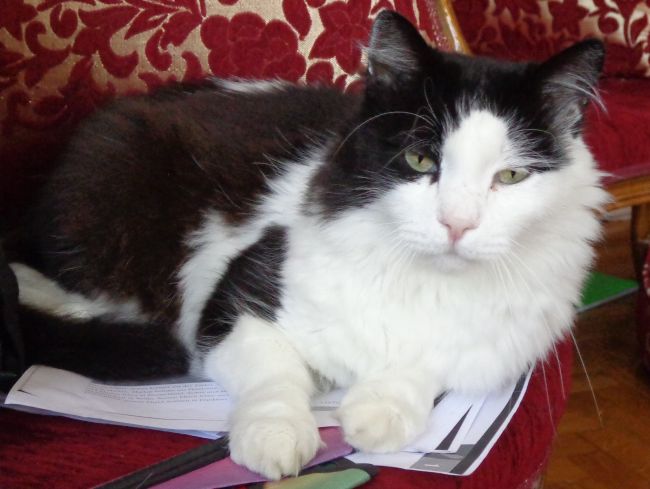 Male cat Felix The home as a living space
The photo on the right shows an African wildcat. These wild cats are the natural ancestors of all today's domestic cats and originally inhabited different habitats from the semi-desert to the savannah in North Africa and on the Arabian Peninsula. Domestic cats are therefore adapted to higher temperatures and originally did not experience winters with frost and snow. The home is therefore a pleasant living space for domestic cats in terms of temperature, especially in winter. In their natural habitats, however, African wildcats and feral domestic cats occupy a territory of one to four square kilometers, which they roam daily in search of prey and occasionally encounter other members of their species. From this point of view, the home is a small, boring area for cats. If the environment allows the cat to survive safely outside the home, cats should be given the opportunity to go outside. This is in keeping with their natural life and nature. However, in metropolitan areas and many large cities with a high volume of traffic, it is not possible to let your cat outside without danger. In large cities, feral cats rarely live longer than a year. If they have not previously become victims of road traffic, they will sooner or later become infected with one of the many cat diseases or parasites which, if left untreated and sometimes unfortunately also treated, will certainly lead to the early death of the animals. It therefore depends on where you live whether you can let your cat out as an outdoor cat or whether long-term survival is only guaranteed indoors. Unfortunately, it happens again and again all over the world that people acquire a cat and are later overwhelmed with the pet. Sometimes the cats are even abandoned and simply left to their fate. It is therefore extremely important to be aware of a few things before getting a cat. The first thing to think about is not just a possible cat allergy of all human residents in the home. Never keep cats as single animals in the homeThe confined and boring environment of an apartment can cause an indoor cat to become lethargic and depressed. This also shortens their life expectancy, which is normally around 15 years. Some people have the time and inclination to spend all day with their cat. But most people work or have other tasks and commitments in addition to their cat. Especially when you have less time to spend with your cat, life for an indoor cat can be very dull and lonely. If a cat can't go outside, there should always be another cat in the home. A second cat changes the living situation for cats enormously. When they are kept in pairs, they spend time together: they play, fight, chase or cuddle with each other. The two animals can do all the things together that cats find interesting and train their natural reflexes, even if the humans are less attentive or go on vacation. 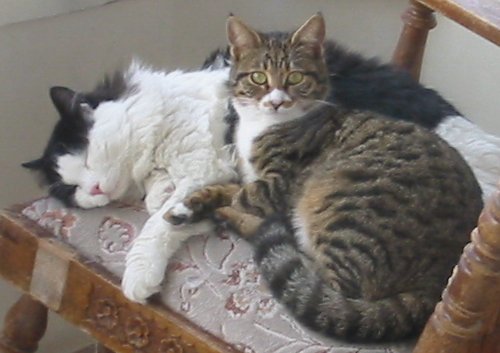
However, the cats must get on well with each other. This is most likely to happen when they are still young. An old cat that has lived alone in the home for a long time may no longer accept another cat in its living space and will start to fight the "intruder". There are old cats who generally can no longer accept other cats. With older cats, a lot depends on the character of the cat and the skill and experience of the owner. However, some older cats are happy to have company after initial threatening gestures and cautious approaches. Experienced cat owners who can organize a slow approach between the two animals in the right time frame can also bring older cats together with a lot of patience and feeling. It is therefore best to adopt two young cats together immediately. Siblings always get along. Ideally, you can simply take in two cats from the same litter together. But if the cats are still young enough, they will also get on well with unrelated conspecifics. Cats break and dirty a lotPeople who have a very pronounced love of tidiness and cleanliness and attach particular importance to the complete integrity of all (perhaps expensive) furnishings should not get a cat. Especially when cats are young, they cause a lot of damage. Scratching sofas, armchairs and furniture as natural behaviorEven scratching posts or other professional or home-made objects for scratching do not stop cats from indulging in their soothing scratching ritual in other places in the home, at least from time to time. Biologically, scratching is used by cats to care for their claws, to mark their territory with pheromones, and to reduce stress and feel good. Scratching objects is therefore very important for cats. It is impossible and above all not ethical to counteract this natural behavior. To a certain extent, however, it is possible to influence a cat's scratching behavior. Food thievesBut they also open food packaging, shopping bags or other bags out of curiosity, the urge to eat or boredom if these have not been put away and closed in time. Even if they can learn that they are not allowed to steal human food from the plate or table, they cannot permanently resist the temptation if the food is left unattended for a long time. 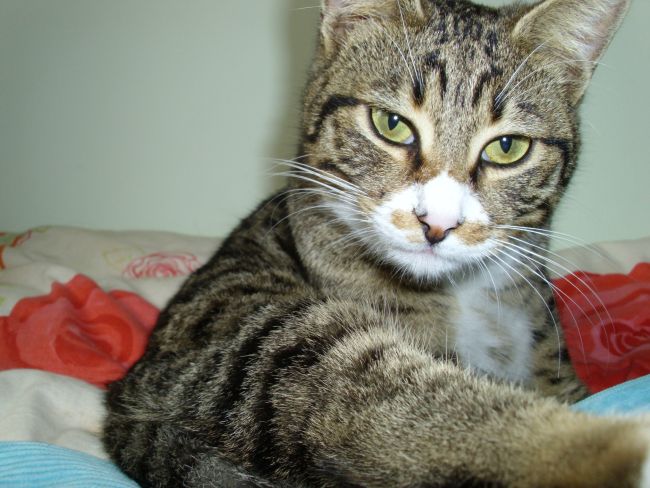
So you have to love your cat enough to be able to forgive it the depreciation of furniture and carpets and the occasional theft of your own lunch, although you can counteract these cat behaviors to a certain extent with increasing experience. Cat claws destroy delicate clothingCats like to climb on their humans, want to play with them or express their affection by kicking their milk. They sometimes get their claws caught in their humans' clothing, but not intentionally. Delicate items of clothing can easily become unsightly damaged. This is particularly annoying when it comes to newly purchased clothing. They also like to lie on freshly washed or worn textiles lying around the home. They find the scent of their humans or the detergent particularly attractive. This can also make an expensive, delicate evening dress unwearable very quickly. In an apartment with cats, clothes should always be quickly put in the wardrobe or hung up so that they are safe from the cats. Cats lose a lot of hair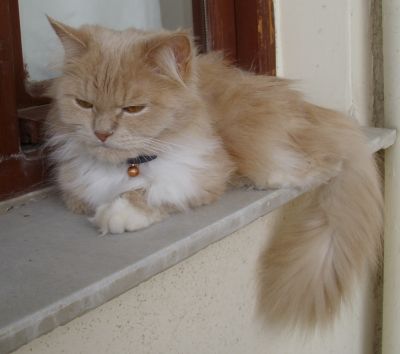
Since cats have fur, they shed thousands of hairs every day, which accumulate everywhere in the home. Cats in the home mean that you have to remove the cat hair as well as the dust. It is particularly bad with long-haired cats (see photo on the left), whose hair is often difficult to remove from the carpet or sofa. If you keep cats in your home, you either have to clean more often and with more effort, or you have to live with the hair that is shed everywhere. Twice a year, when the cat sheds its summer or winter coat, things get particularly hairy in the home. Cats cause high costsIf you can live with the fact that cats occasionally break things and leave hair everywhere, there is not much to be said against keeping cats in the home. However, it should not be forgotten that a cat's life of around 15 years costs its owners a lot of money. First of all, obviously, food and cat litter for the litter tray have to be bought regularly. CastrationThe greatest suffering of street cats in the world's big cities and metropolitan areas is caused by overpopulation. Overpopulation means that far too many cats inhabit the available living space. This applies not only to large cities, but also to rural areas in western countries, where an uncontrolled increase in cats can have a detrimental effect on the local ecosystem. In most of the world's big cities, street cats and dogs are provided with water and food by compassionate people, but the cats still die at a very young age from diseases, parasites, epidemics or infections. Territory fights during the mating season are also associated with a great deal of suffering for the young males in overpopulations, as there is no place for the defeated male to retreat to. The infections of the fight wounds after the fights cost many males their lives senselessly. The very early pregnancies of female street cats that have just reached sexual maturity also cause the animals a great deal of suffering. Mothers who are too young abandon their kittens because they are unable to cope with rearing them or fall ill. Even in western countries, there are more cats than people are willing to take in. Every year, feral domestic cats are caught by hunters and handed over to animal shelters or, in some countries, shot as a last resort. So it makes absolutely no sense to breed cats - there are more than enough of them. Only experienced professionals can make money from cat breeding. In addition, commercial cat breeding is associated with high investments and requires being part of a professional network. Ordinary people who breed their cats usually find it difficult to get the young cats to someone for free. In the end, they often end up in an animal shelter. Young cats that have already been neutered, have already received the most important vaccinations and are free of parasites can therefore be obtained from animal shelters for free or for a small fee. Anyone taking in a cat that has not yet been neutered should definitely do so. There is no demand for young cats, it only creates suffering for the cats. Veterinary costsCats need vaccinations just like humans and, even in the best environment and with good care, they can fall ill from time to time. Veterinary costs are usually very high and can quickly exceed 1000 dollars. You should therefore always have something like an emergency reserve available for emergencies and include regular treatments such as worming and protection against parasites. Unemployment benefit recipients and Hartz IV recipients are therefore unfortunately unable to pay for visits to the vet in most cases. The Jobcenter does not grant any subsidies for the medical care of animals, not even for emergency medical treatment. If an animal falls ill, it can therefore be very painful for the animal and its owner. Pet health insurance offers a way out of this situation. For around $15 per month for a cat, pet health insurance pays for operations up to a maximum of $4,000 per year in the event of illness or an accident. 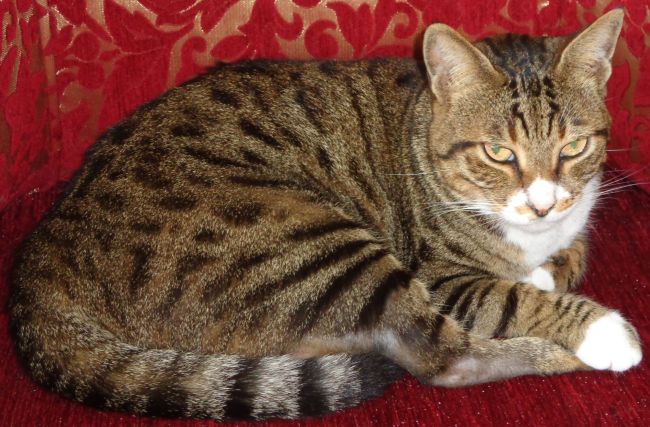 Cat Carla |
||||||
|